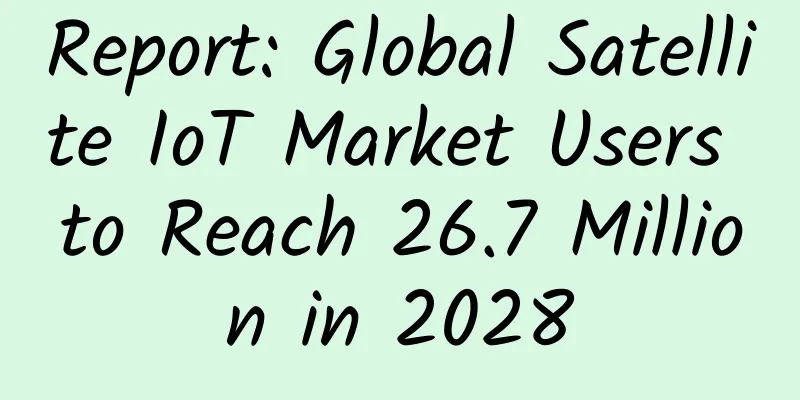Report: Global Satellite IoT Market Users to Reach 26.7 Million in 2028

|
According to a recent research report released by Berg Insight, a professional IoT analysis agency, the global satellite IoT communications market size is growing at a steady rate and is expected to grow to 26.7 million households by 2028. Satellite IoT market is booming, and operators are striving to continue to grow the number of usersThe report reveals that by 2023, the number of global satellite IoT users has exceeded 5.1 million. Looking ahead, this user group will continue to grow at a compound annual growth rate (CAGR) of 39.2%, reaching 26.7 million by 2028. Currently, only about 10% of the world's surface area can obtain ground connection services, which provides huge development space and opportunities for satellite IoT communication technology. Satellite connections can supplement ground cellular and non-cellular networks in remote areas, especially suitable for industries such as agriculture, asset tracking, maritime transport, oil and gas industry exploration, utilities, construction and government. Existing satellite operators and more than 20 emerging companies are actively entering the IoT connection market. Figure 1 Global satellite IoT user growth trend from 2022 to 2028 Berg Insight’s research covers 40 satellite IoT operators and provides an in-depth analysis of the current status and development prospects of this field. “Iridium, Orbcomm, Viasat (Inmarsat) and Globalstar are currently the largest satellite IoT network operators today,” said Johan Fagerberg, principal analyst at Berg Insight, in the report. Iridium achieved a significant 17% increase in its subscriber base in 2023, leading the industry with 1.8 million subscribers. Originally a dedicated satellite operator, ORBCOMM has transformed itself into an end-to-end solutions provider, providing services not only on its own satellite network but also as a distribution partner for ViaSat (Inmarsat) and others. By the end of 2023, ORBCOMM had a total of 715,000 subscribers on its own and ViaSat networks. Globalstar has 480,000 subscribers. Other satellite operators with tens of thousands of subscribers include Australia's Myriota, France's Kineis and the United Arab Emirates' Thuraya. New companies emerge, low-Earth orbit nanosatellites lead the technology trendIn addition to the existing satellite operators, a number of new and notable companies have recently emerged in the market, including Astrocast, AST SpaceMobile, CASC/CASIC, E-Space, Hubble Network, Kepler Communications, Kineis, Ligado Networks, Lynk, Myriota, Omnispace, Skylo, Swarm Technologies (SpaceX), and Totum. Many of these companies are built around the core concept of nanosatellites in low Earth orbit. While some companies rely on proprietary satellite connectivity to support IoT devices, others are beginning to leverage terrestrial wireless IoT connectivity. In the coming years, collaboration between satellite and mobile operators to explore new hybrid satellite-terrestrial connectivity opportunities will become more common. Fagerberg concluded: “Skylo is the most active non-terrestrial network (NTN) provider offering hybrid cellular/satellite services in recent times, with partners including Deutsche Telekom, BICS, emnify, floLIVE, Monogoto, O2 Telefónica, Particle, Soracom, Transatel and 1GLOBAL (Truphone). Other satellite IoT operators working with mobile operators and mobile virtual network operators (MVNOs) include Sateliot, Starlink, OQ Technology, Omnispace, Lynk, Intelsat, ViaSat and AST SpaceMobile.” |
<<: Why does TCP require three handshakes instead of two?
>>: One picture to help you understand: 2024 Volcano Engine Feilian New Product Launch Conference
Recommend
Trip.com QUIC high availability and performance improvements
First, the QUIC multi-process deployment architec...
Satellite Internet or 5G, which is cheaper?
Just as a manned spacecraft was sent into space, ...
TMThosting: VPS monthly payment 15% off annual payment 20% off, dedicated server monthly payment 95% off annual payment 20% off, Seattle/Dallas data center
TMThosting has launched the Dedicated Server &...
Configuring 802.1x Remote Authentication
Topology Specification Applicable to all versions...
Aryaka wins the 2016 Global Most Influential SD-WAN Solution Award
[Original article from 51CTO.com] In the just con...
Will the popular SD-WAN really kill MPLS?
[[419147]] Arguably, no network technology has re...
Deeply cultivating integrated streaming media solutions, Yunfan Acceleration CDN obtains license from the Ministry of Industry and Information Technology
On September 6, the Ministry of Industry and Info...
Ruizhi Big Data: Injecting Intelligent Genes into Dual-State IT
In the summer of 2019, a set of data about China&...
Why do we need a Layer 3 switch? Seven indicators for selecting a Layer 3 switch in a monitoring system
Recently, a friend asked about the application of...
How to promote 5G packages in small and medium-sized cities
From the perspective of package value, the curren...
[Black Friday] SiliCloud: Los Angeles VPS starts at $18 for two years, Japan VPS starts at $46 per year, optional CN2 line
I shared information about SiliCloud in September...
Six great ways to improve your web page loading time
【51CTO.com Quick Translation】 Aberdeen Group once...
How to solve VirtualBox bridged networking problems?
【51CTO.com Quick Translation】Let's assume tha...
What kind of sparks will be created when 5G meets the power grid?
In the past, electricity changed the way of produ...
spinservers US servers start at 33% off, 100M unlimited traffic servers start at $69/month, 10Gbps bandwidth servers start at $139/month
spinservers has sent the latest 2023 US Labor Day...









